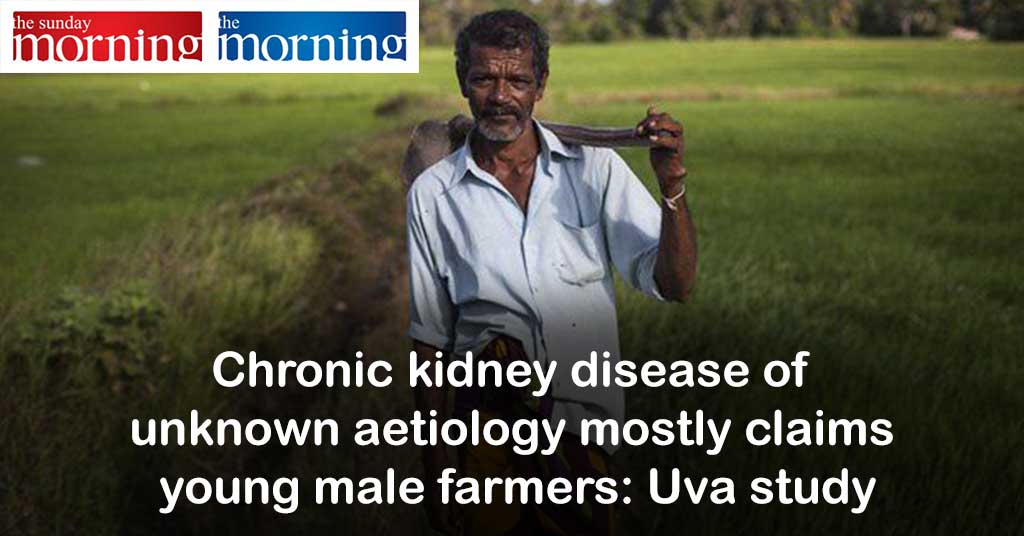Leptospirosis: A Potential Culprit for Chronic Kidney Disease of Uncertain Etiology
Premarathne S.S.a,b · Gamage C.b · Chandrajith R.c · Ratnatunge N.V.d · Wijetunge S.d · Wazil A.e · Chou L.-F.f · Ko Y.-C.f · Huang C.-T.f · Yang H.-Y.f,g,h · Fonseka A.b · Sonnadara T.a · Herath D.a · Hewavitharane P.a · Yang C.-W.f,g,h · Nanayakkara N.e
a Centre for Research, National Hospital, Kandy, Sri Lanka
b Department of Microbiology, Faculty of Medicine, University of Peradeniya, Kandy, Sri Lanka
c Depatment of Geology, Faculty of Science, University of Peradeniya, Kandy, Sri Lanka
d Department of Pathology, Faculty of Medicine, University of Peradeniya, Kandy, Sri Lanka
e Nephrology and Kidney Transplant Unit, National Hospital, Kandy, Sri Lanka
f Kidney Research Center, Chang Gung Memorial Hospital, Linkou, Taiwan
g Department of Nephrology, Chang Gung Memorial Hospital, Linkou, Taiwan
h College of Medicine, Chang Gung University, Taoyuan, Taiwan
Abstract
Purpose: Chronic kidney disease of uncertain etiology (CKDu) is an environmental nephropathy in which the etiological factors are yet uncertain. Leptospirosis, a spirochetal infection that is common among agricultural communities, has been identified as a potential etiology for CKDu beyond environmental nephropathy. Although CKDu is a chronic kidney disease, in endemic regions, an increasing number of cases are reported with features suggestive of acute interstitial nephritis without any known reason (AINu), with or without background CKD. The study hypothesizes that exposure to pathogenic leptospires is one of the causative factors for the occurrence of AINu. Method: This study was carried out using 59 clinically diagnosed AINu patients, 72 healthy controls from CKDu endemic region (endemic controls [ECs]), and 71 healthy controls from CKDu non-endemic region (non-endemic controls [NECs]). Results: The seroprevalence of 18.6, 6.9, and 7.0% was observed in the AIN (or AINu), EC, and NEC groups, respectively, from the rapid IgM test. Among 19 serovars tested, the highest seroprevalence was observed at 72.9, 38.9, and 21.1% in the AIN (AINu), EC, and NEC groups, respectively, by microscopic agglutination test (MAT), particularly for serovar Leptospira santarosai serovar Shermani. This emphasizes the presence of infection in AINu patients, and this also suggests that Leptospira exposure might play an important role in AINu. Conclusion: These data suggest that exposure to Leptospira infection could be one of the possible causative factors for the occurrence of AINu, which may lead to CKDu in Sri Lanka.
Authors
-

Consultant Nephrologist
View all posts
Nephrology and Transplant Unit,
National Hospital, Kandy, Sri Lanka. -

-

-

-

Statistics graduate from Faculty of Science, University of Peradeniya. Currently working as a research assistant and Mphil reader.
View all posts -

Senior Professor,
View all posts
Department of Geology, Faculty of Science,
University of Peradeniya, Sri Lanka.


